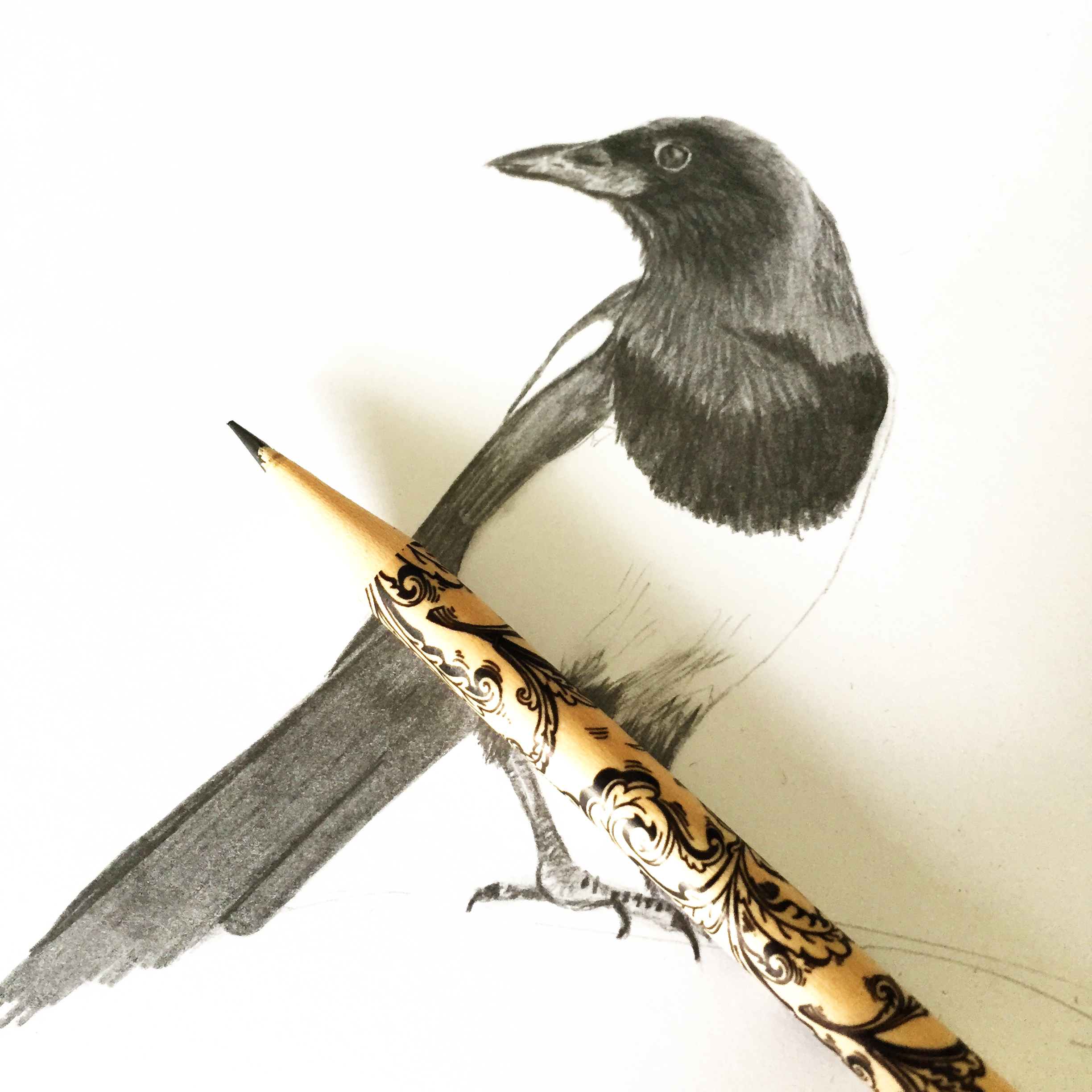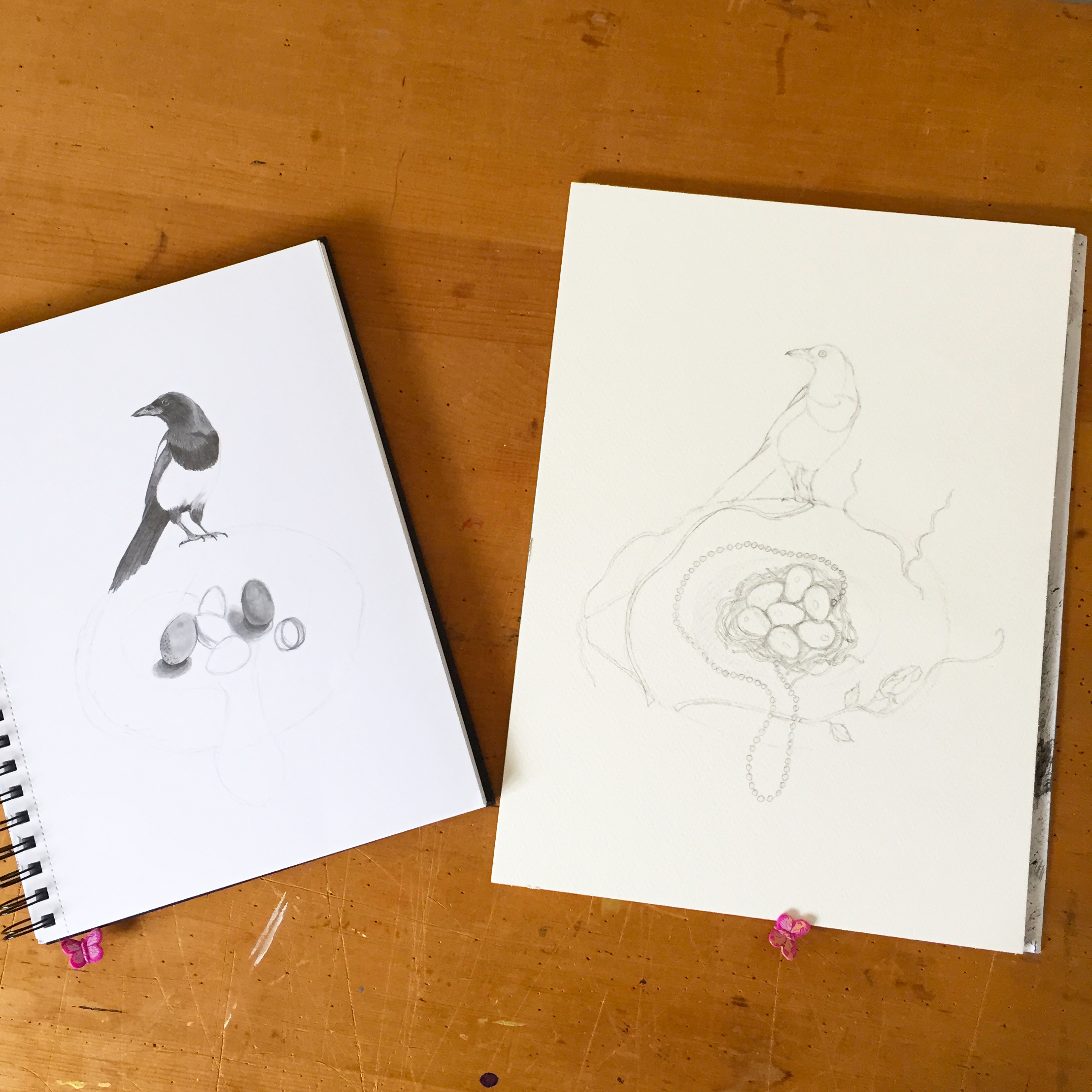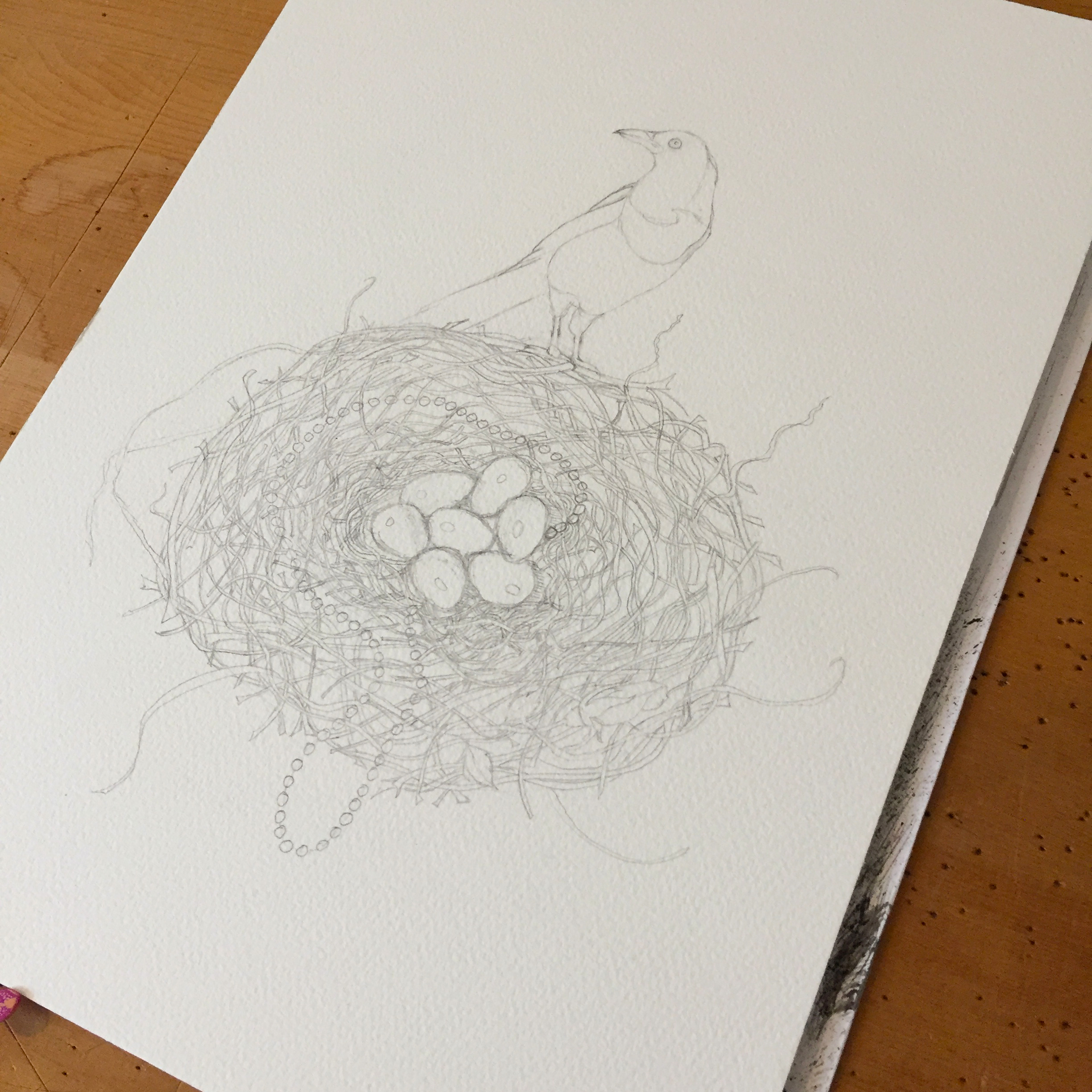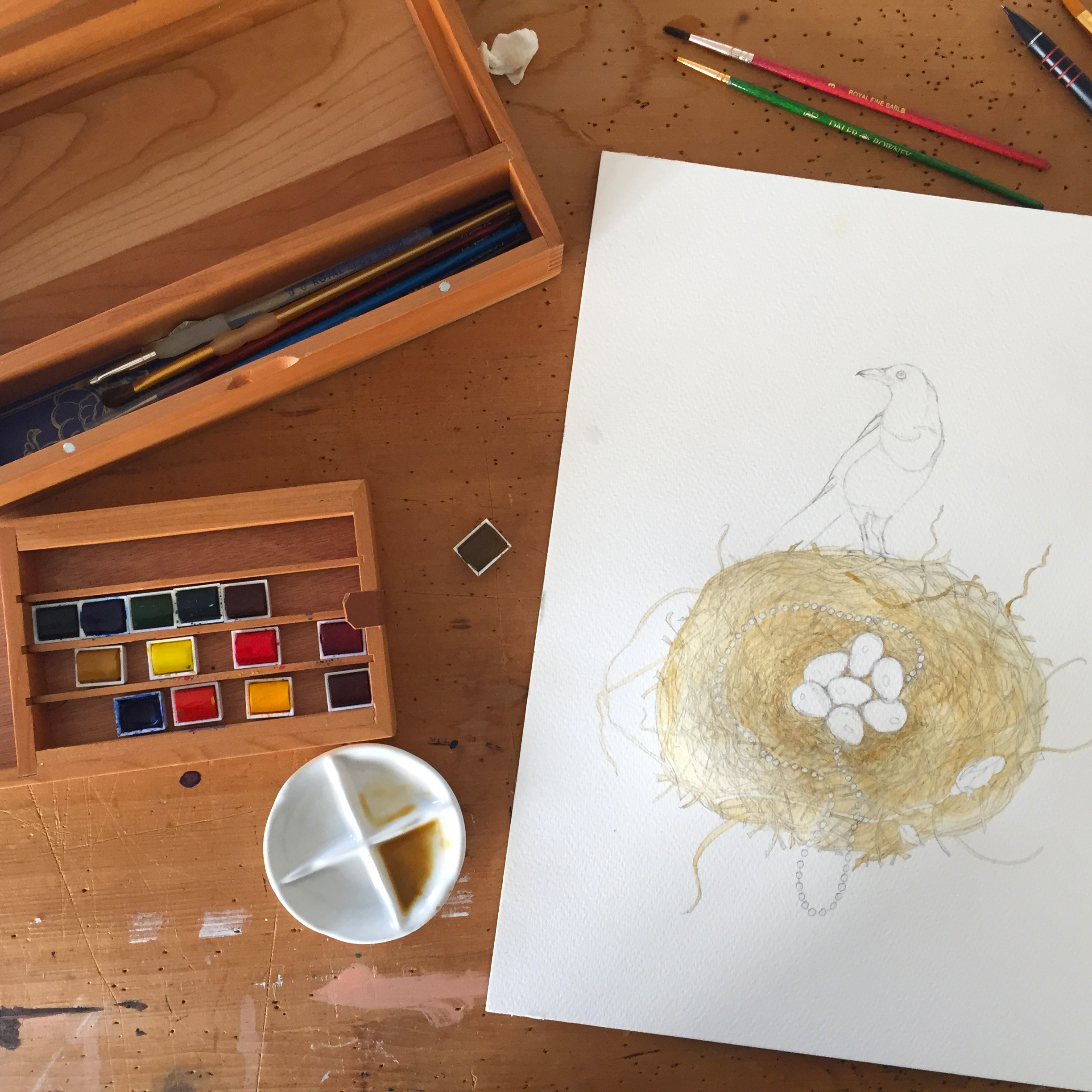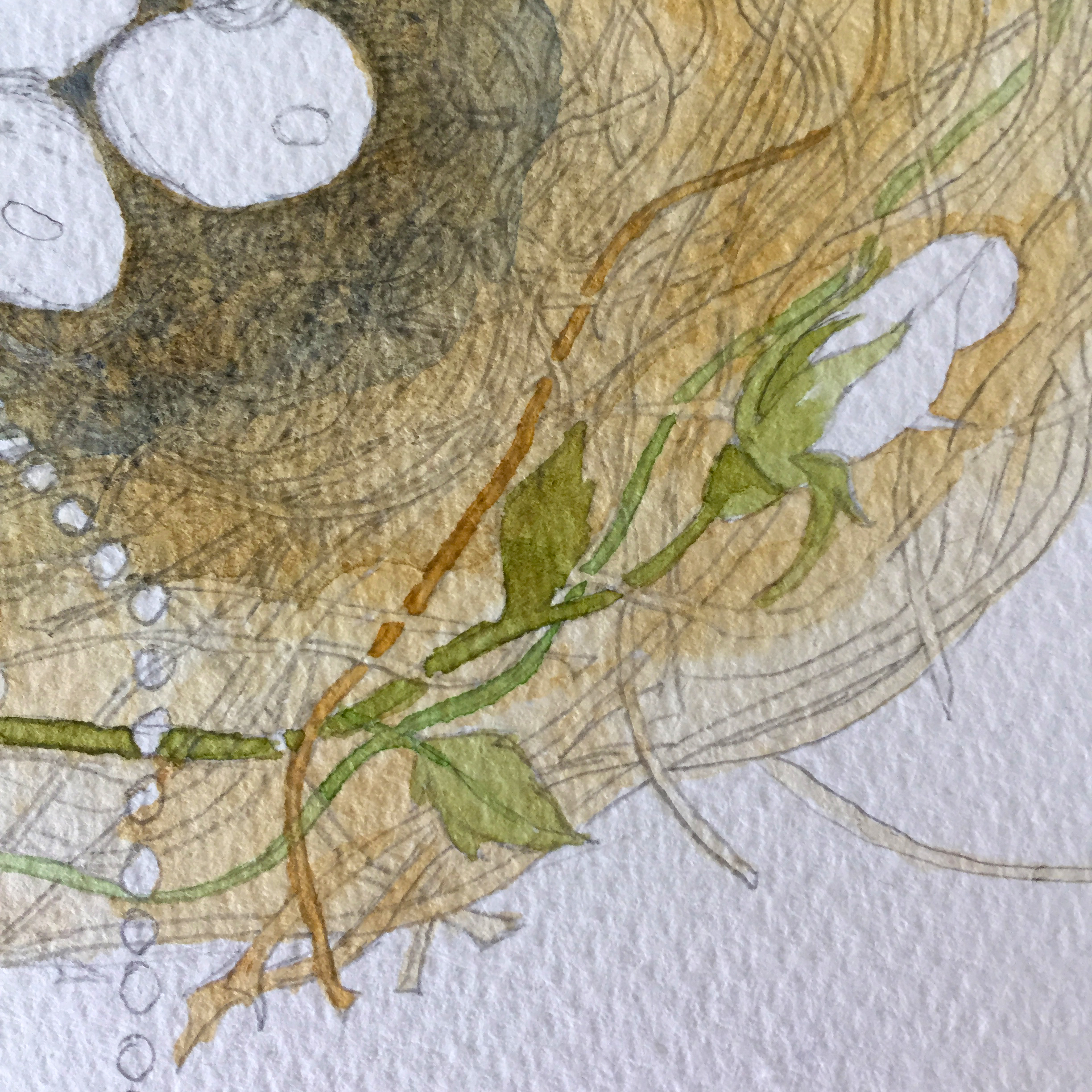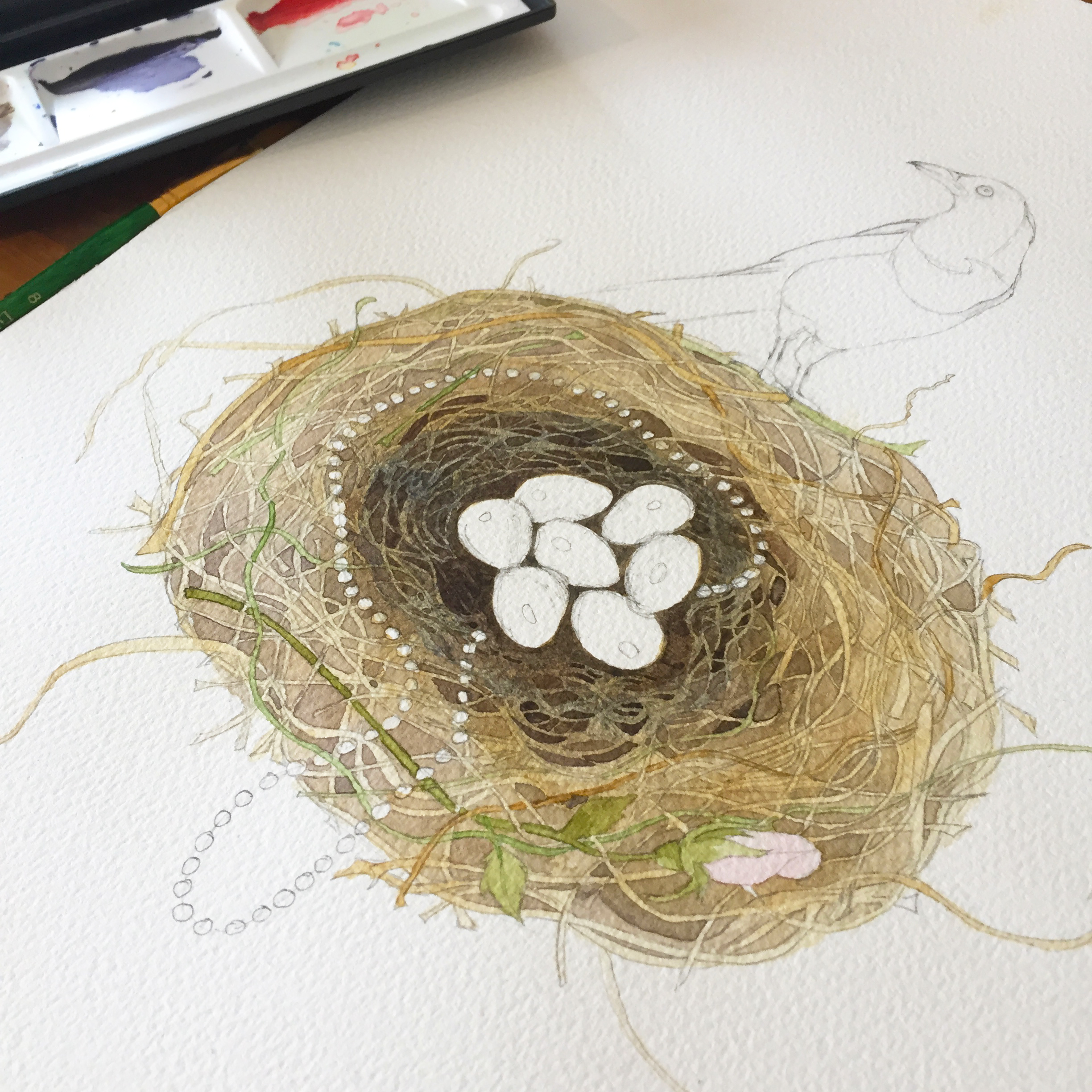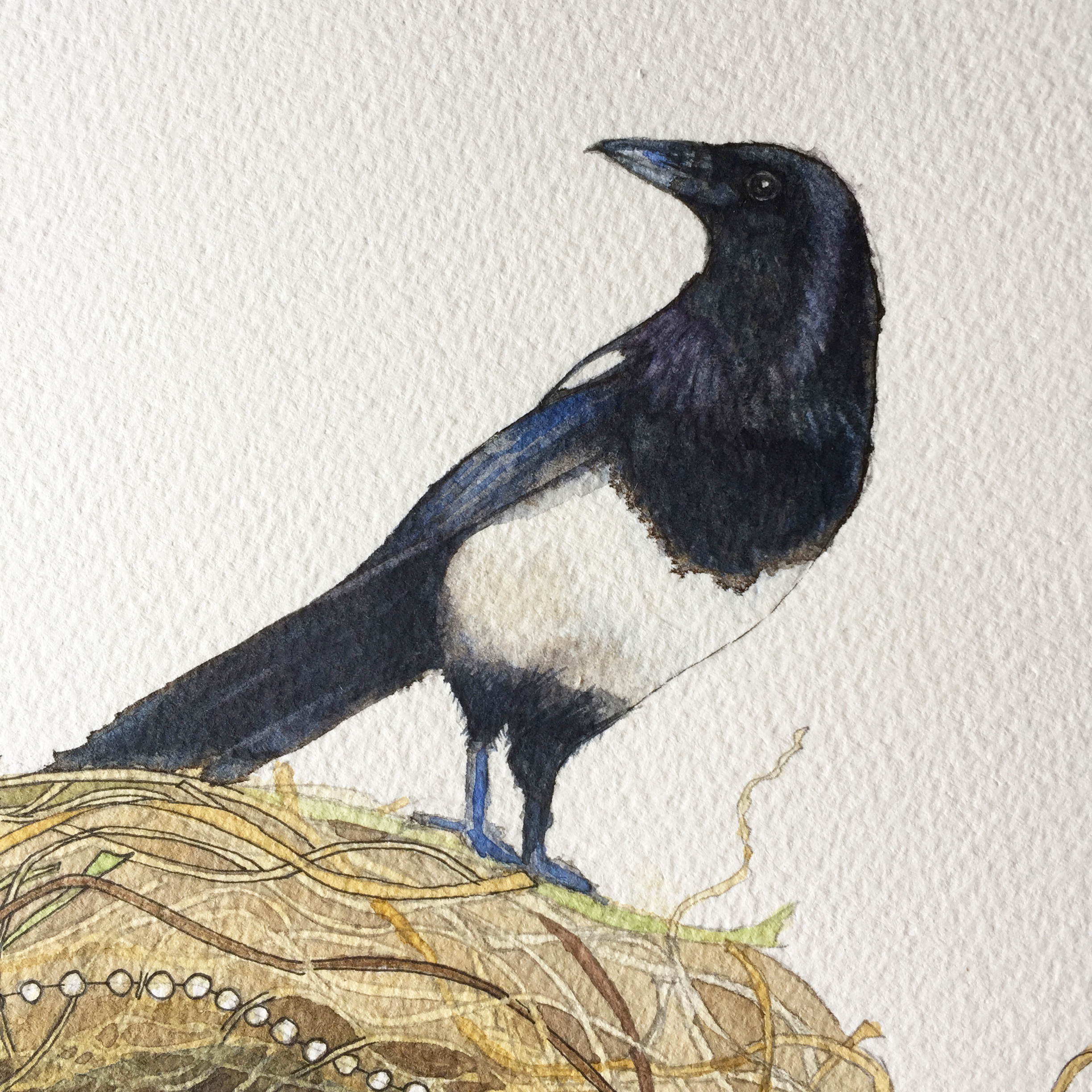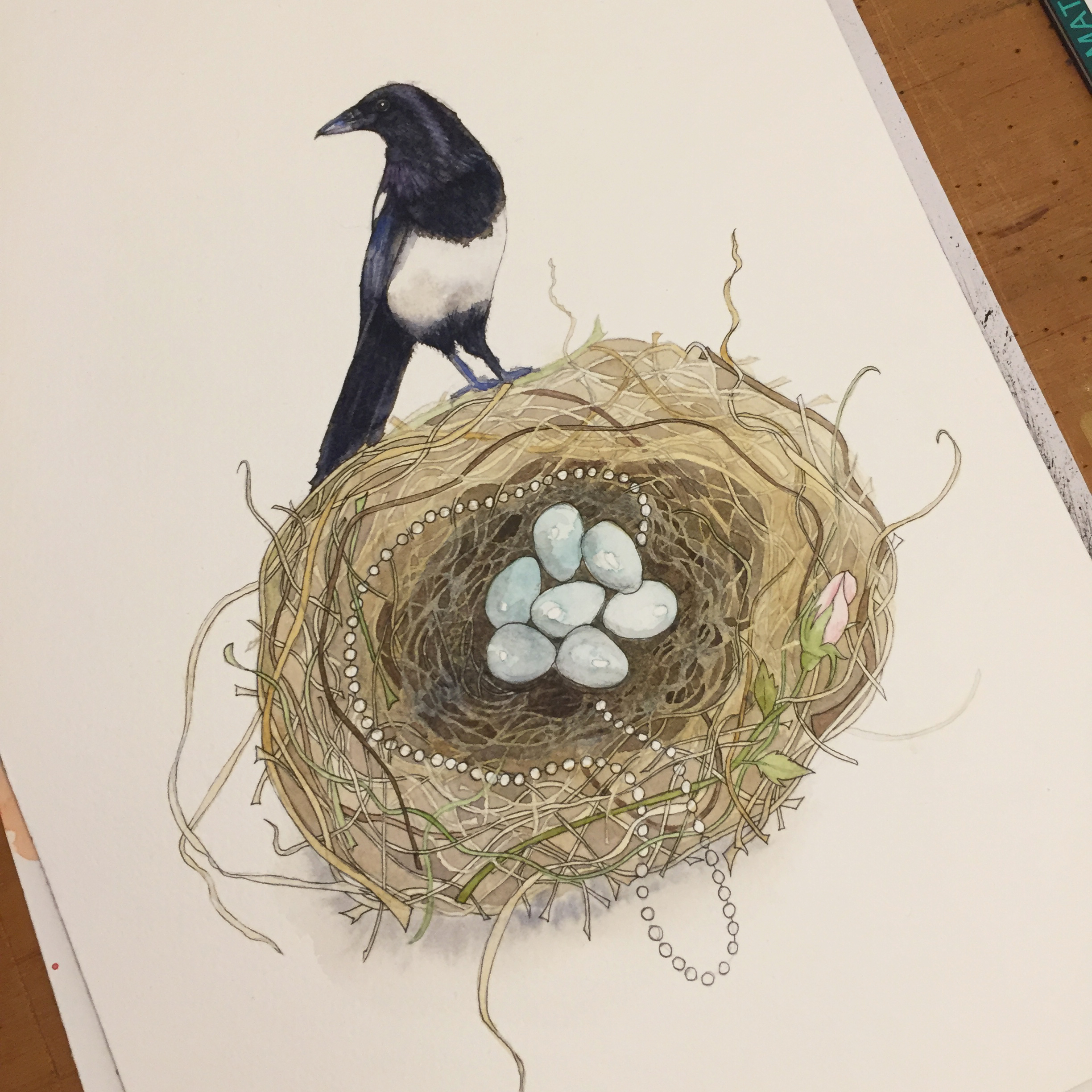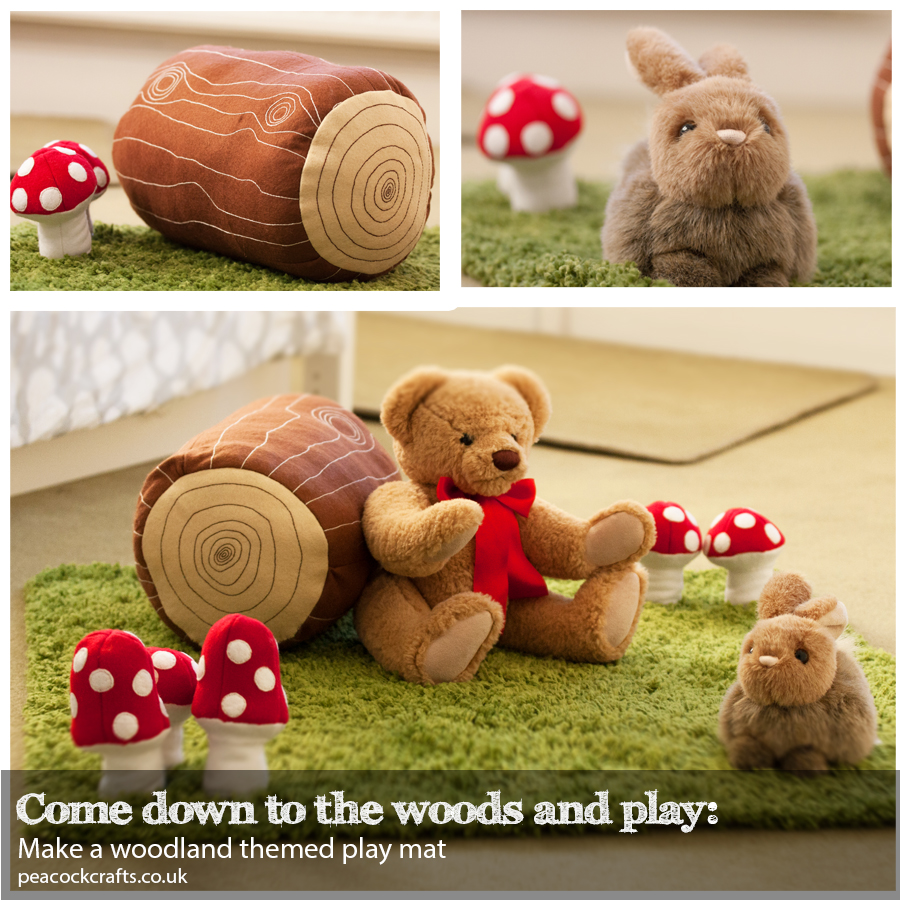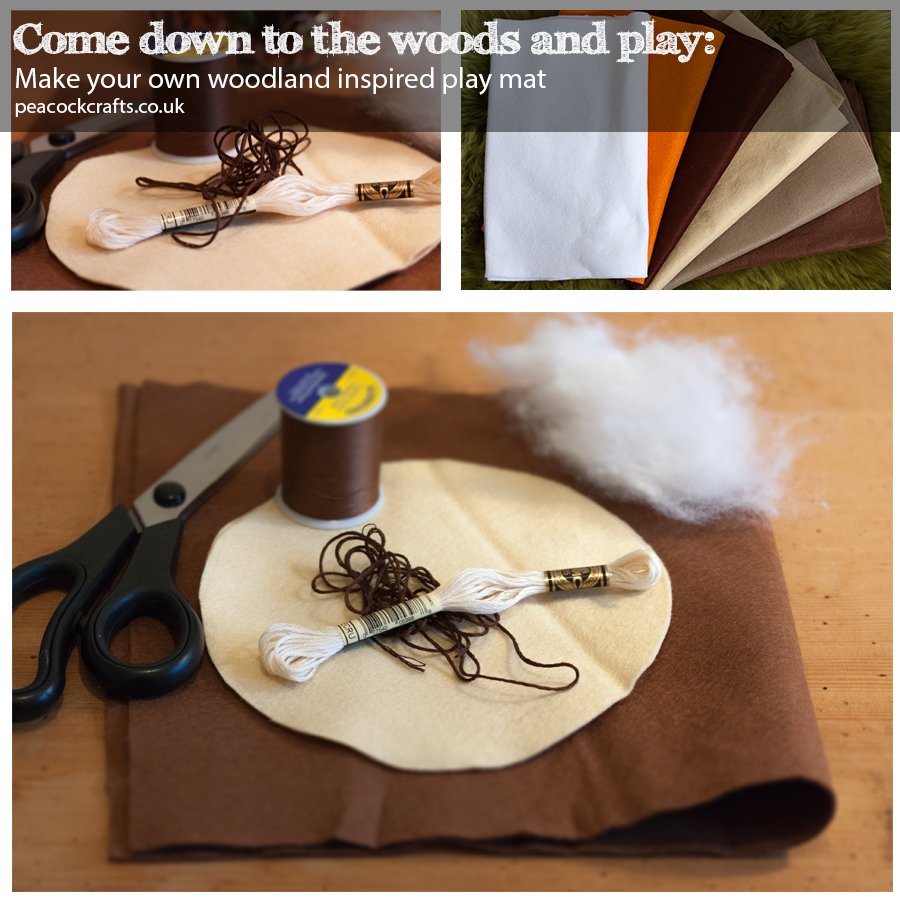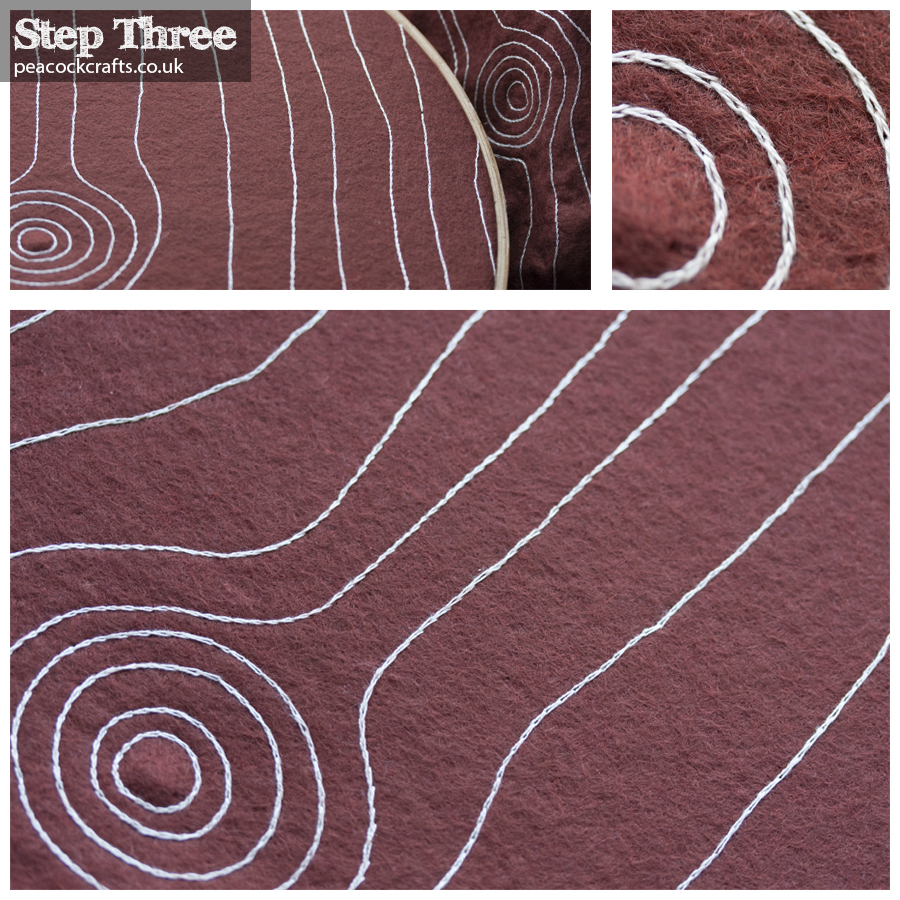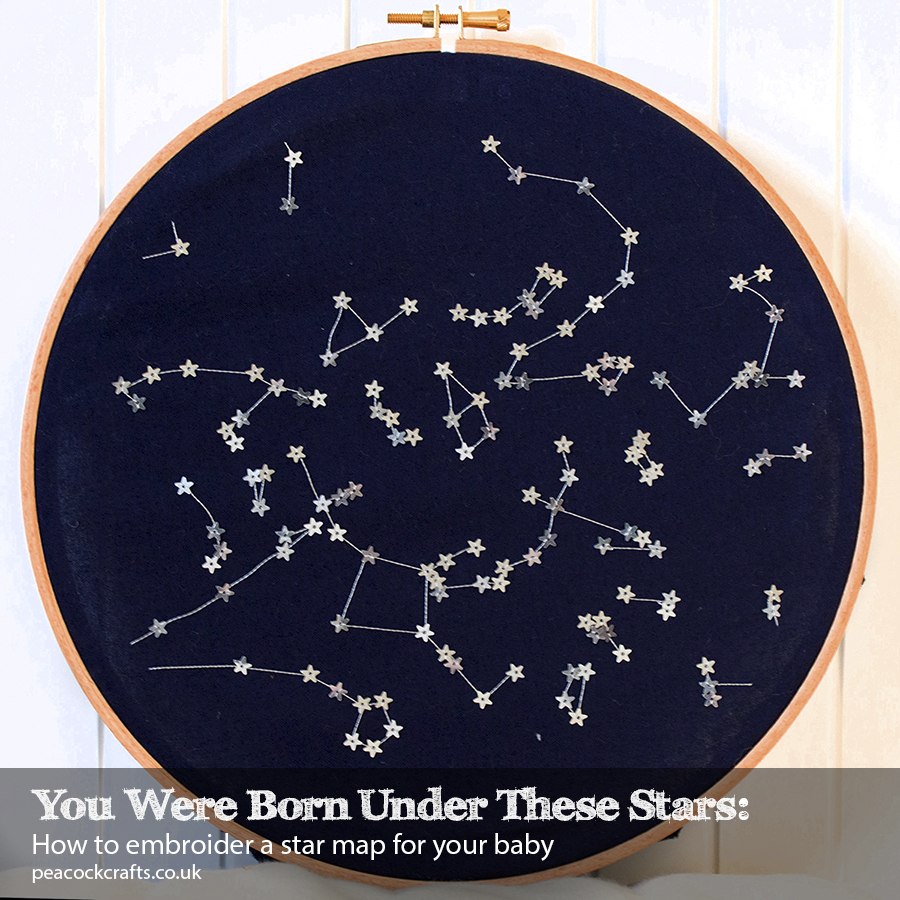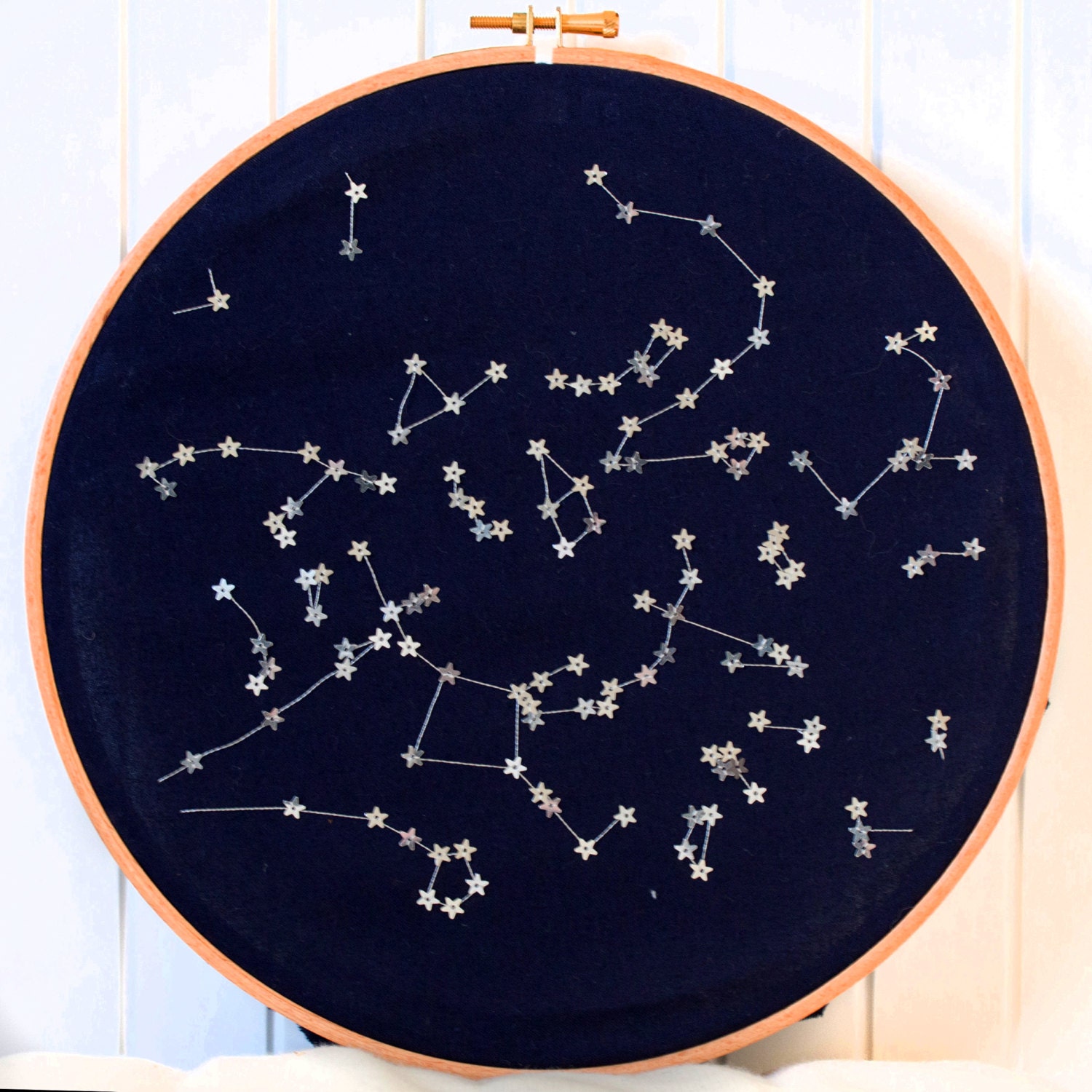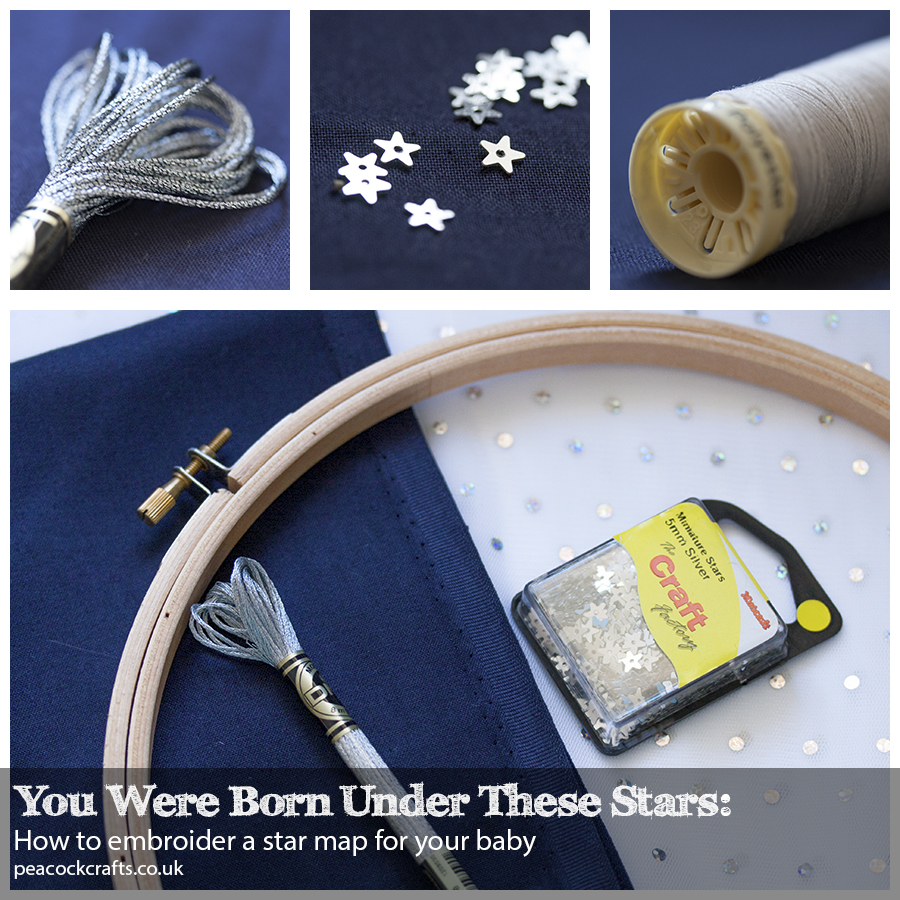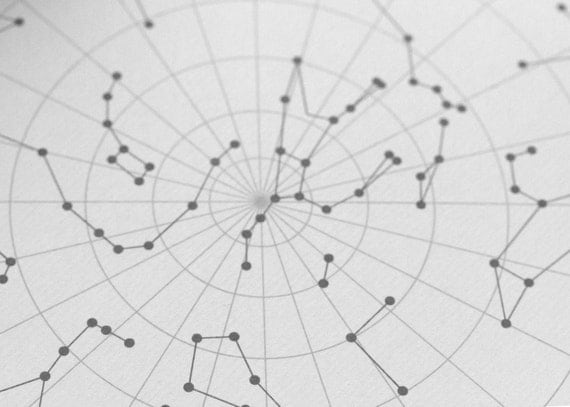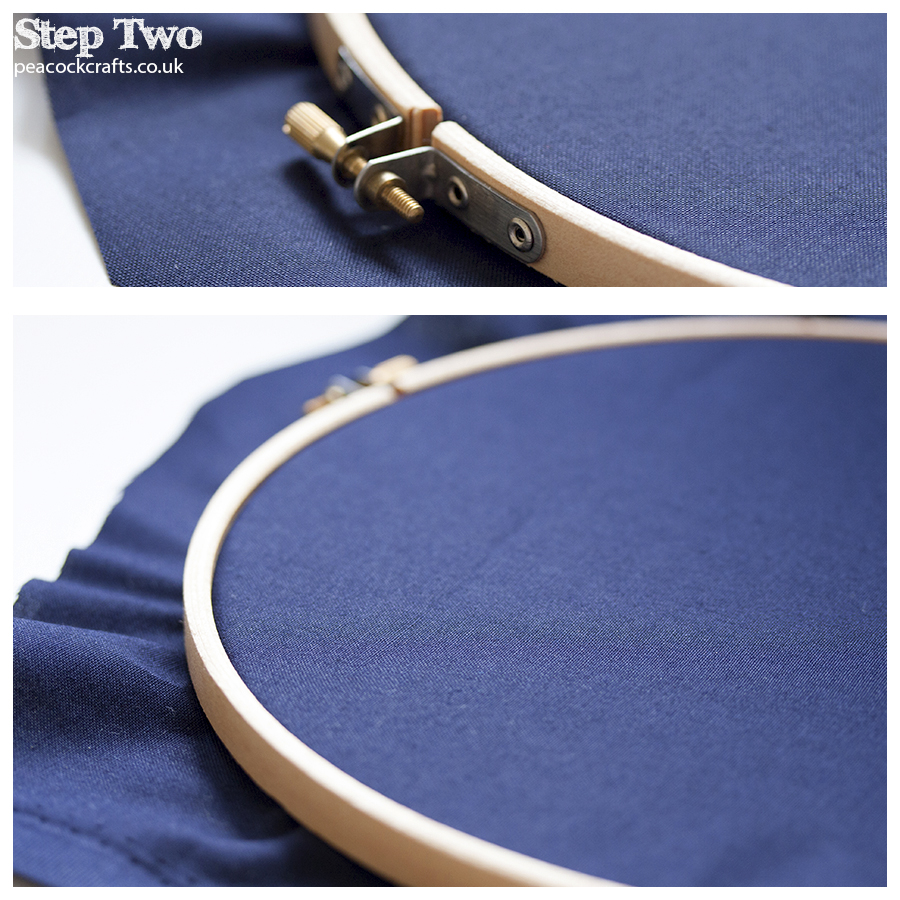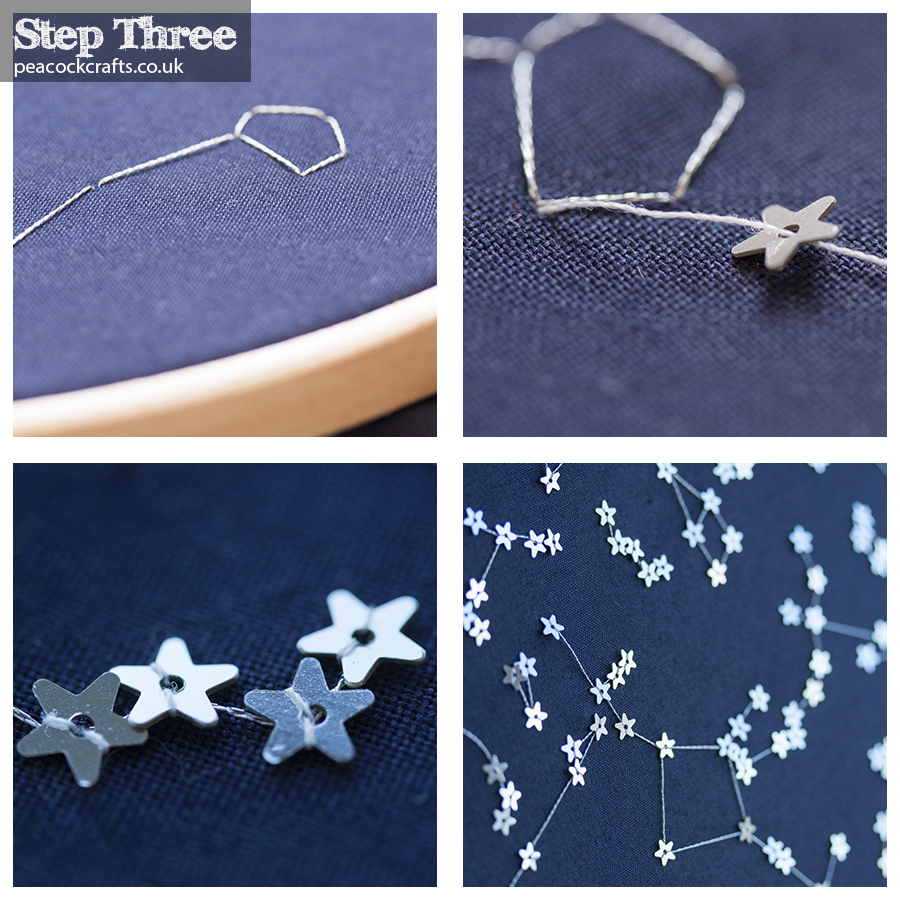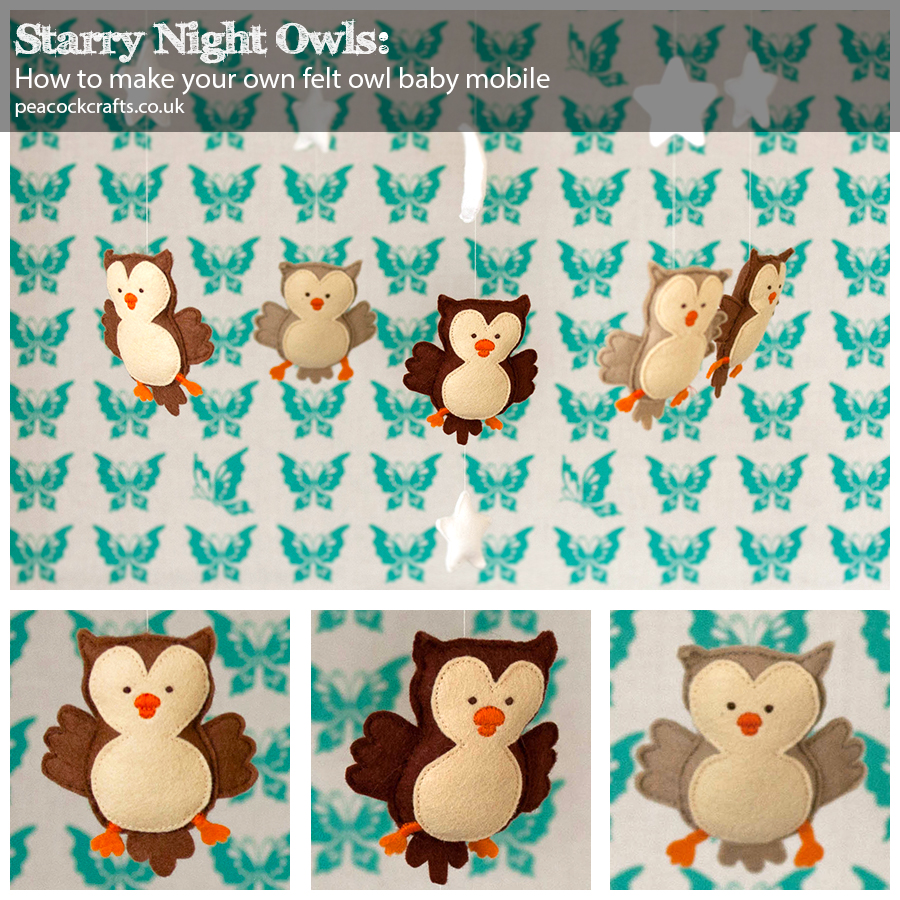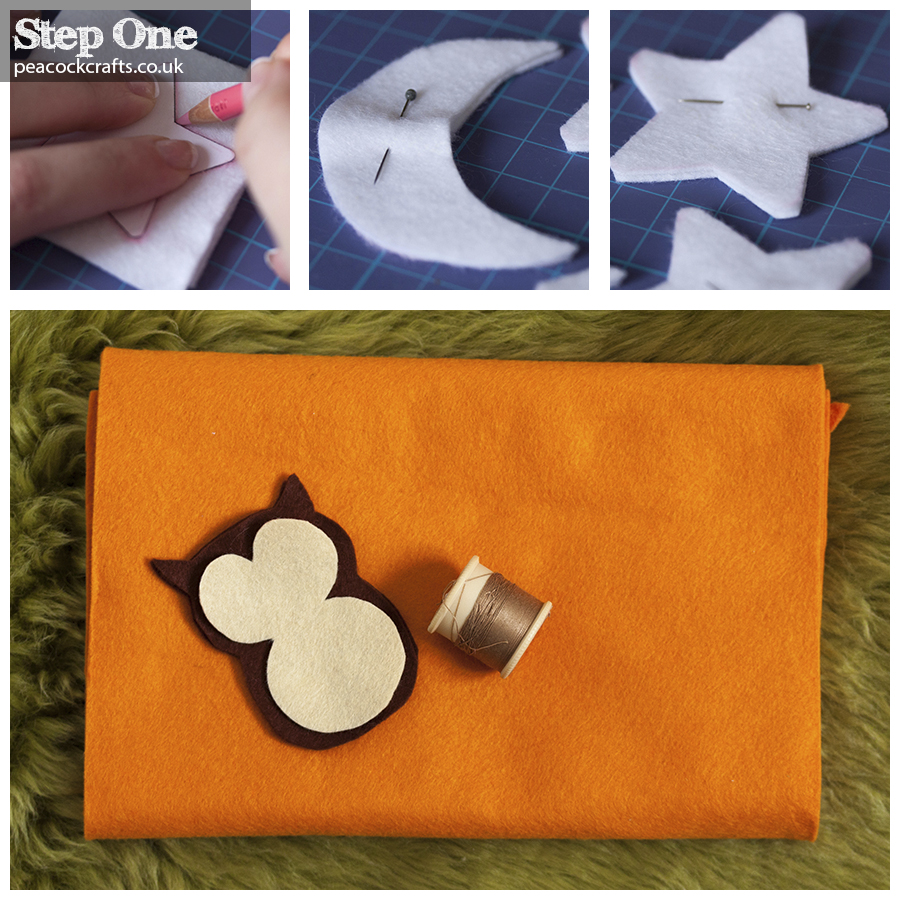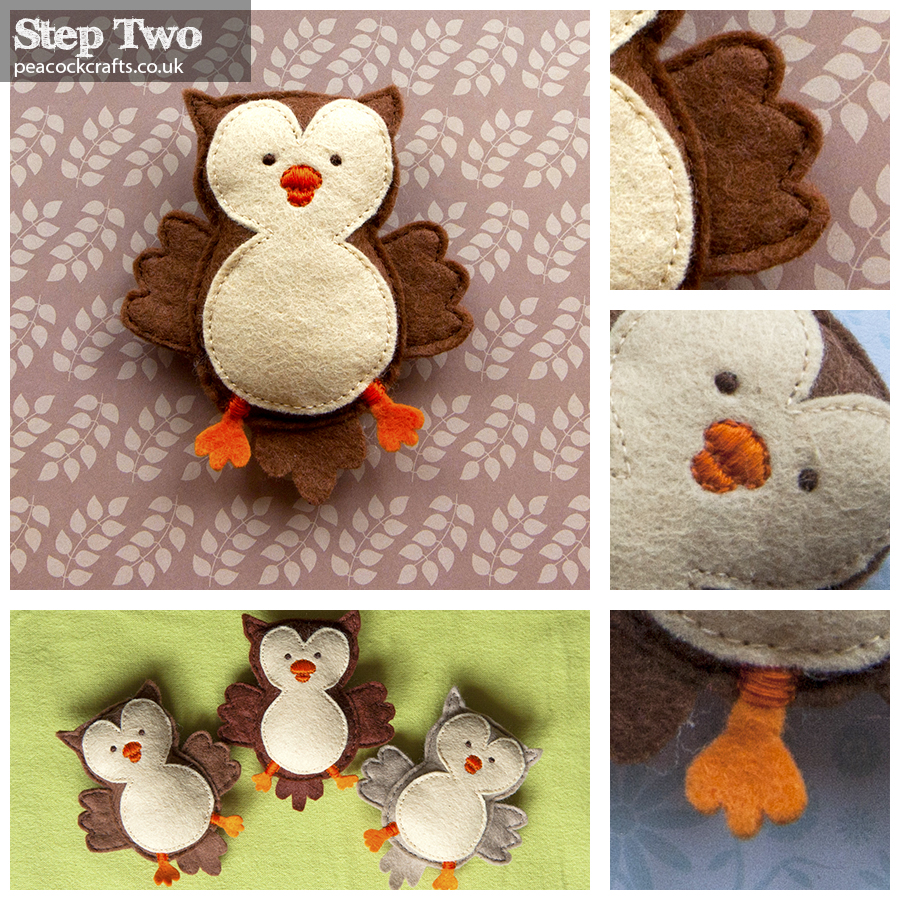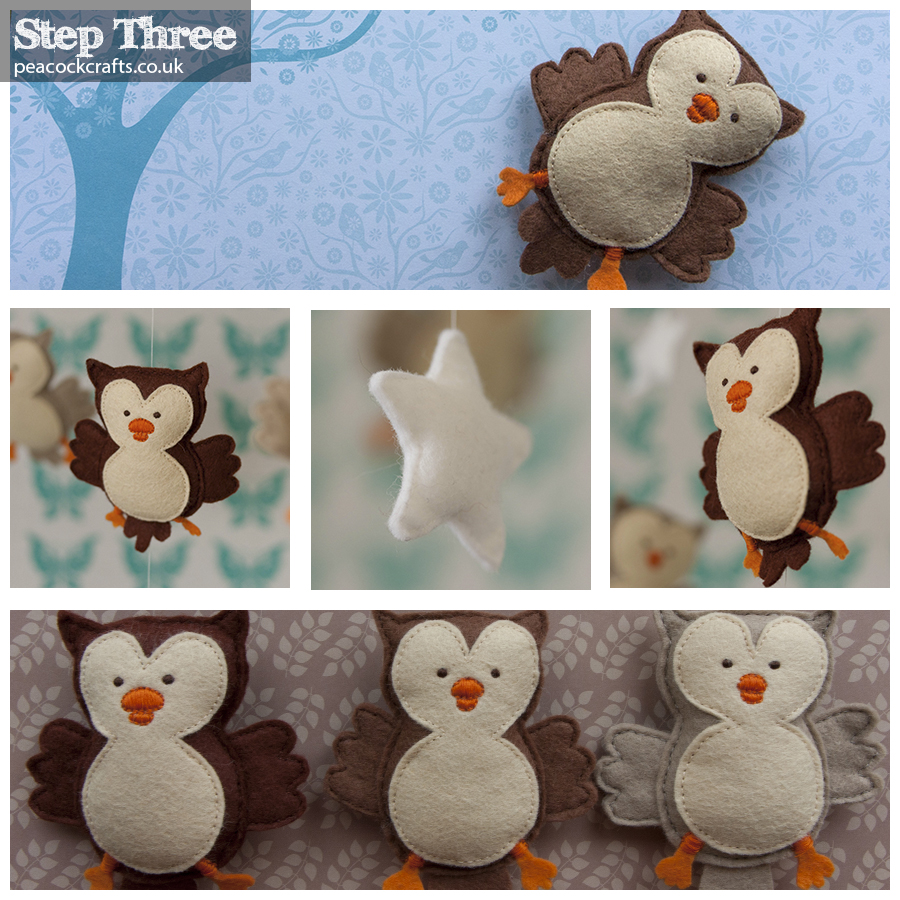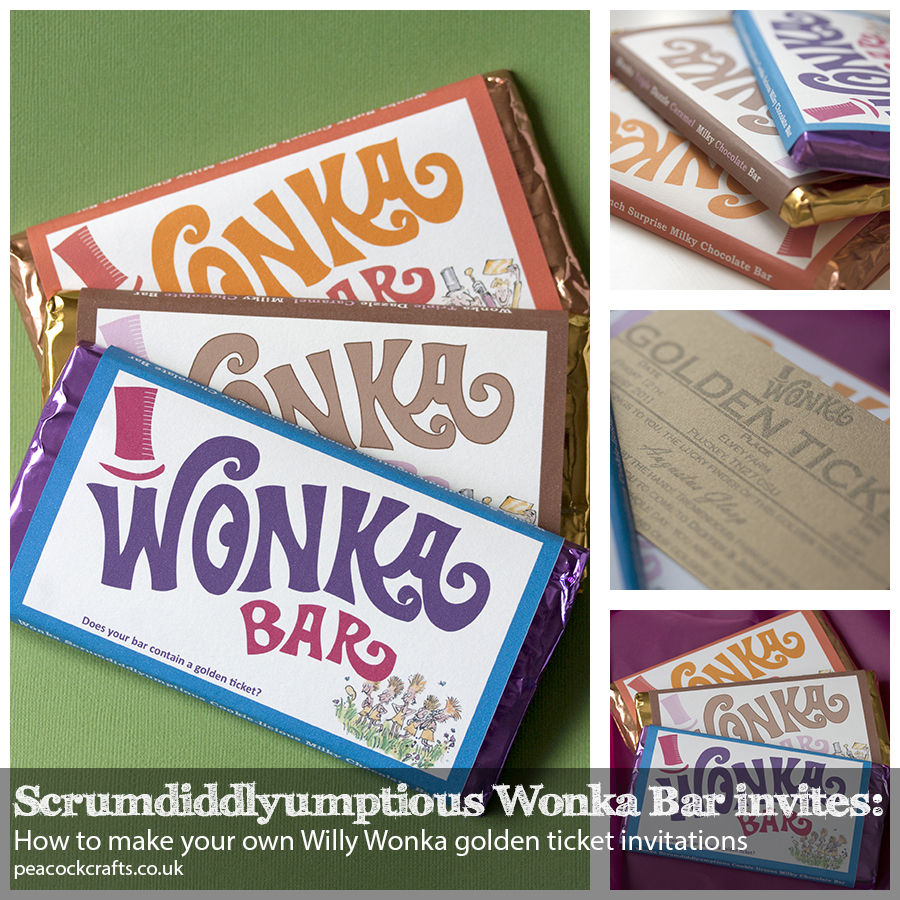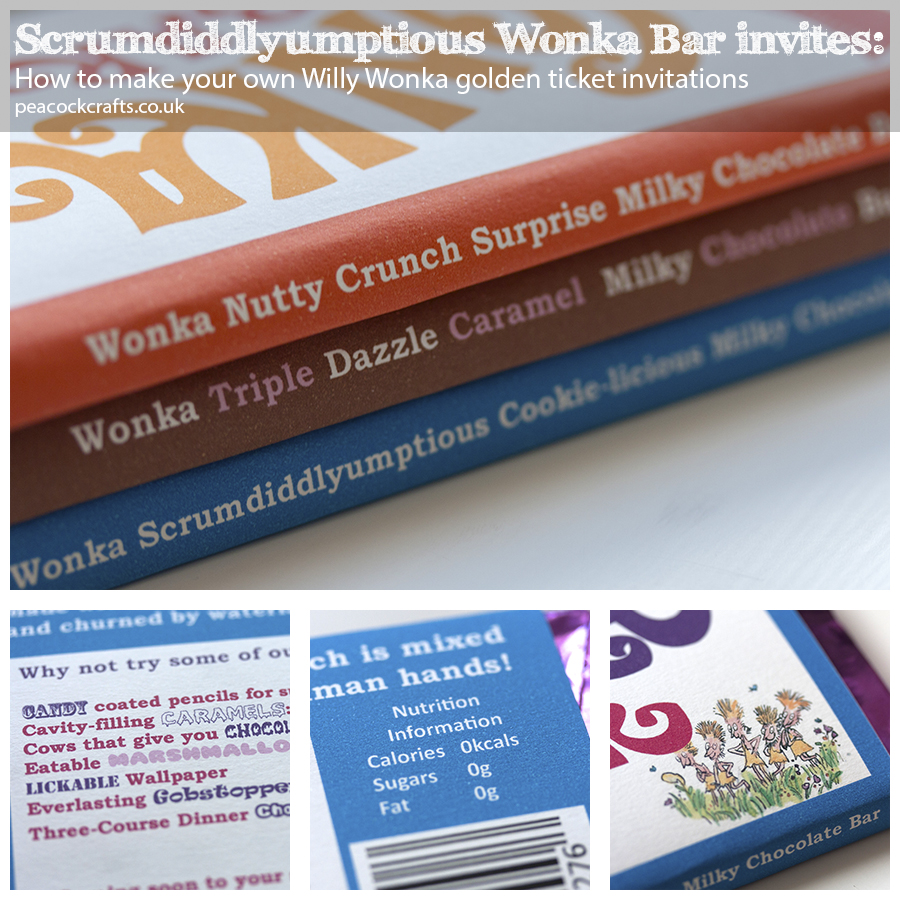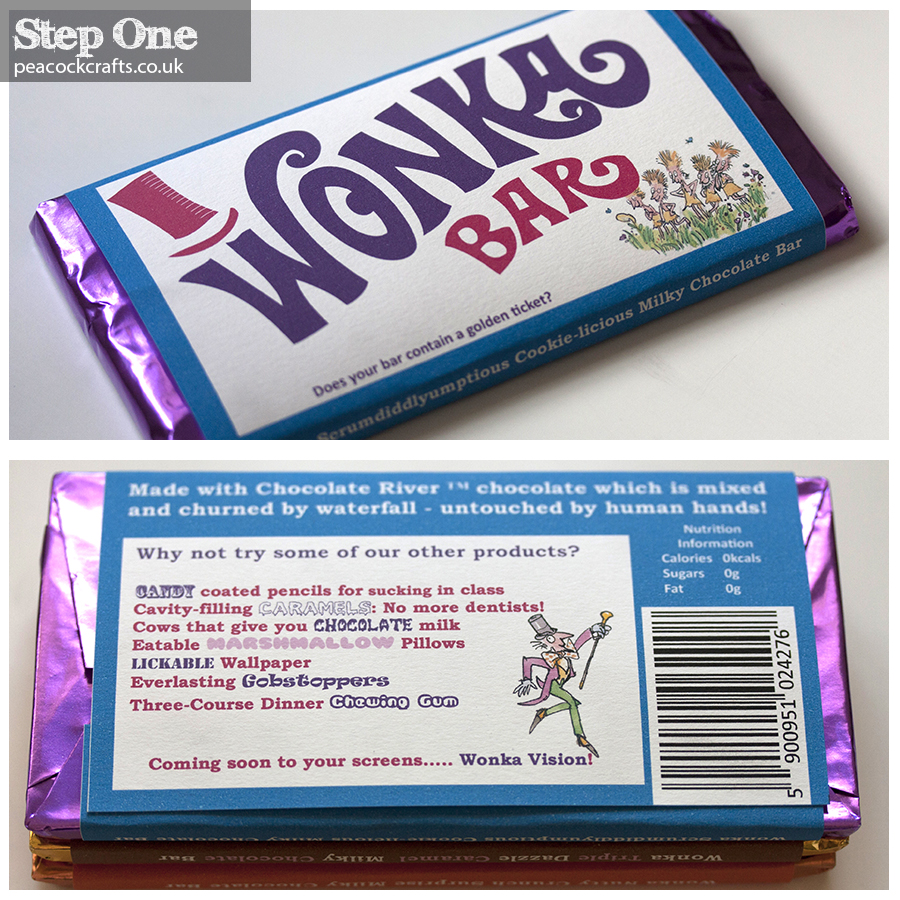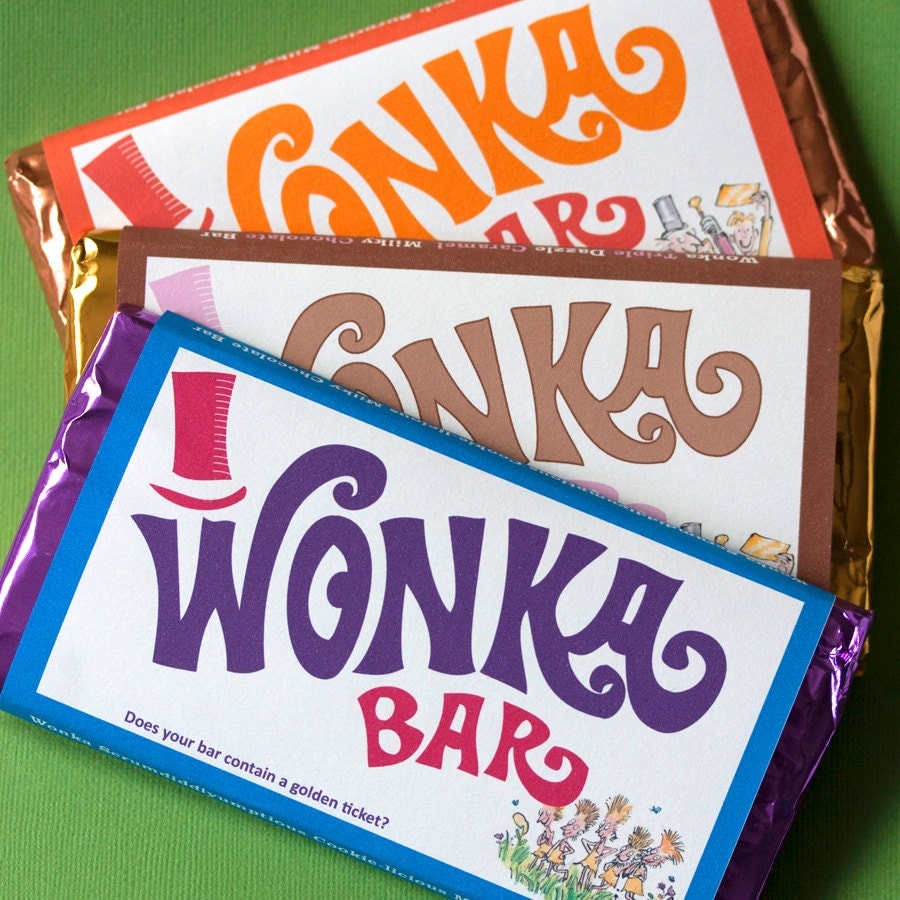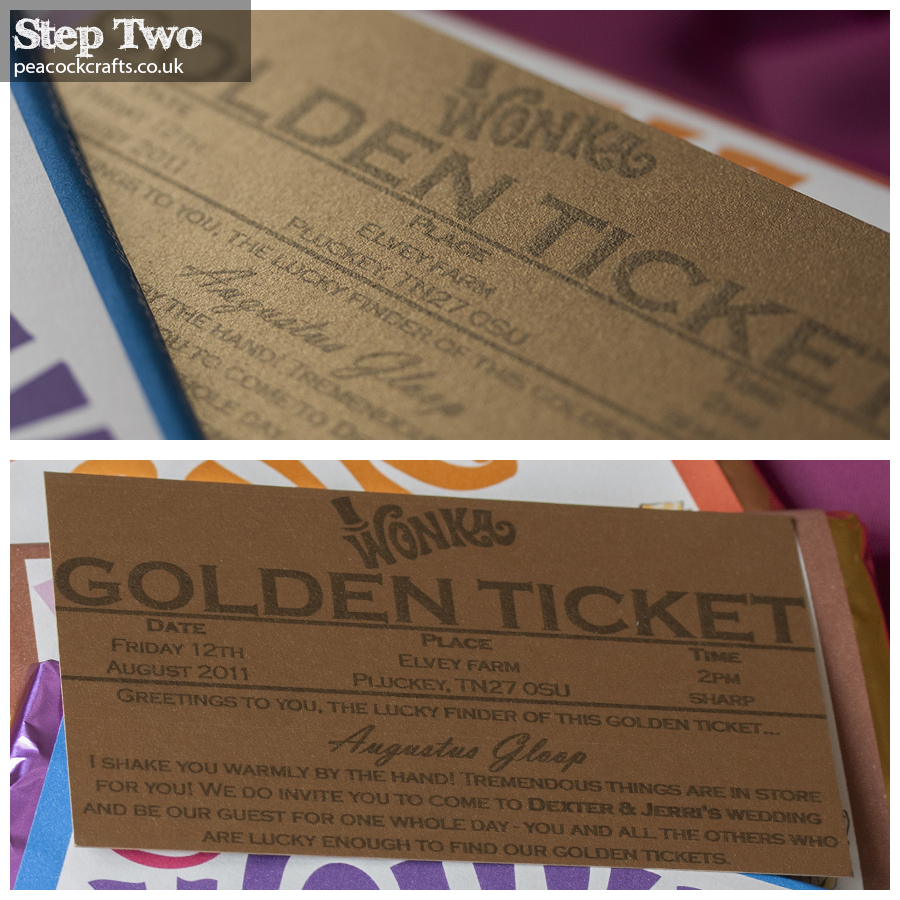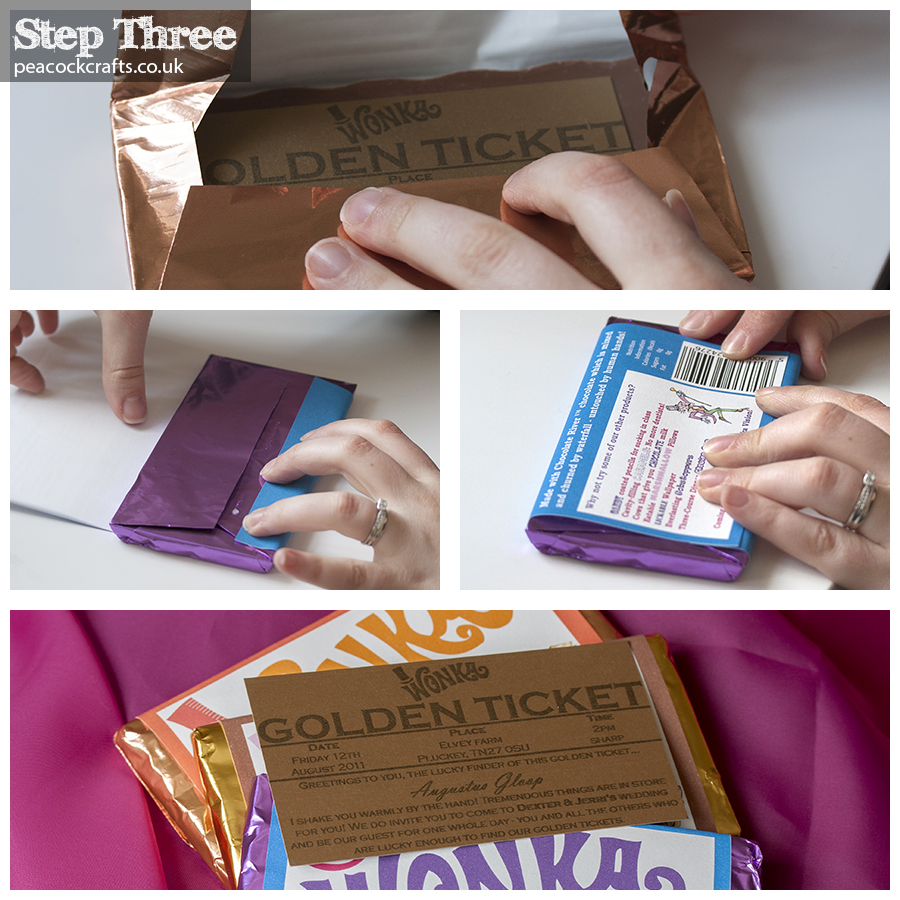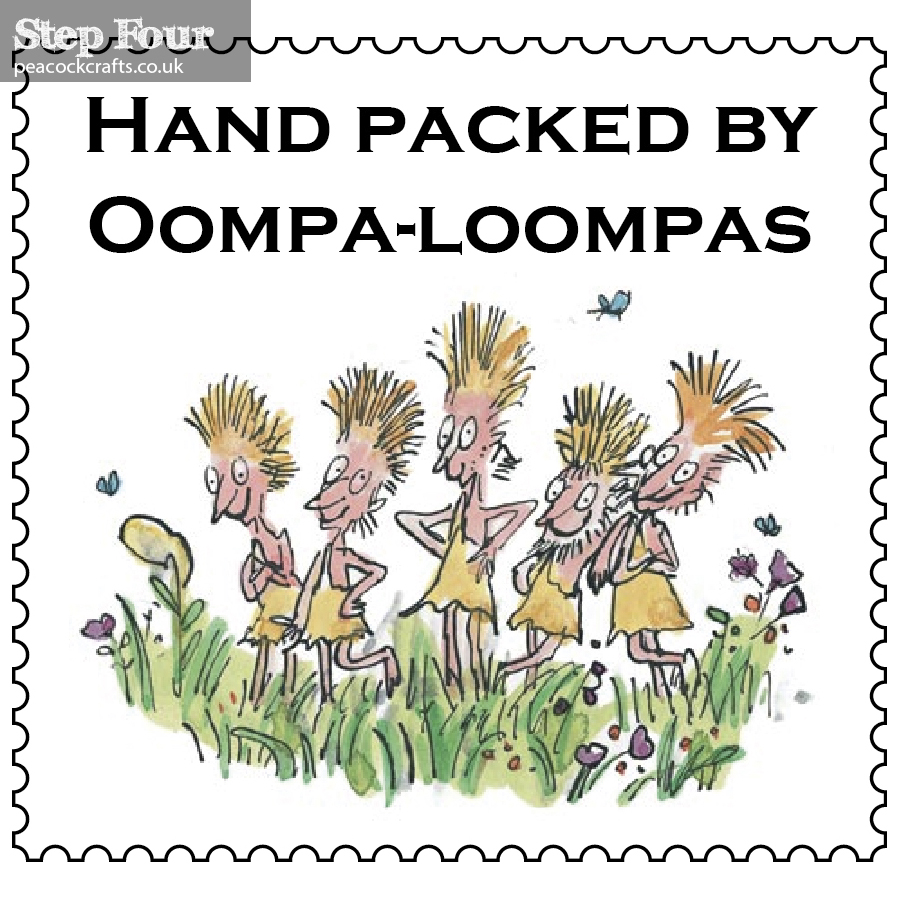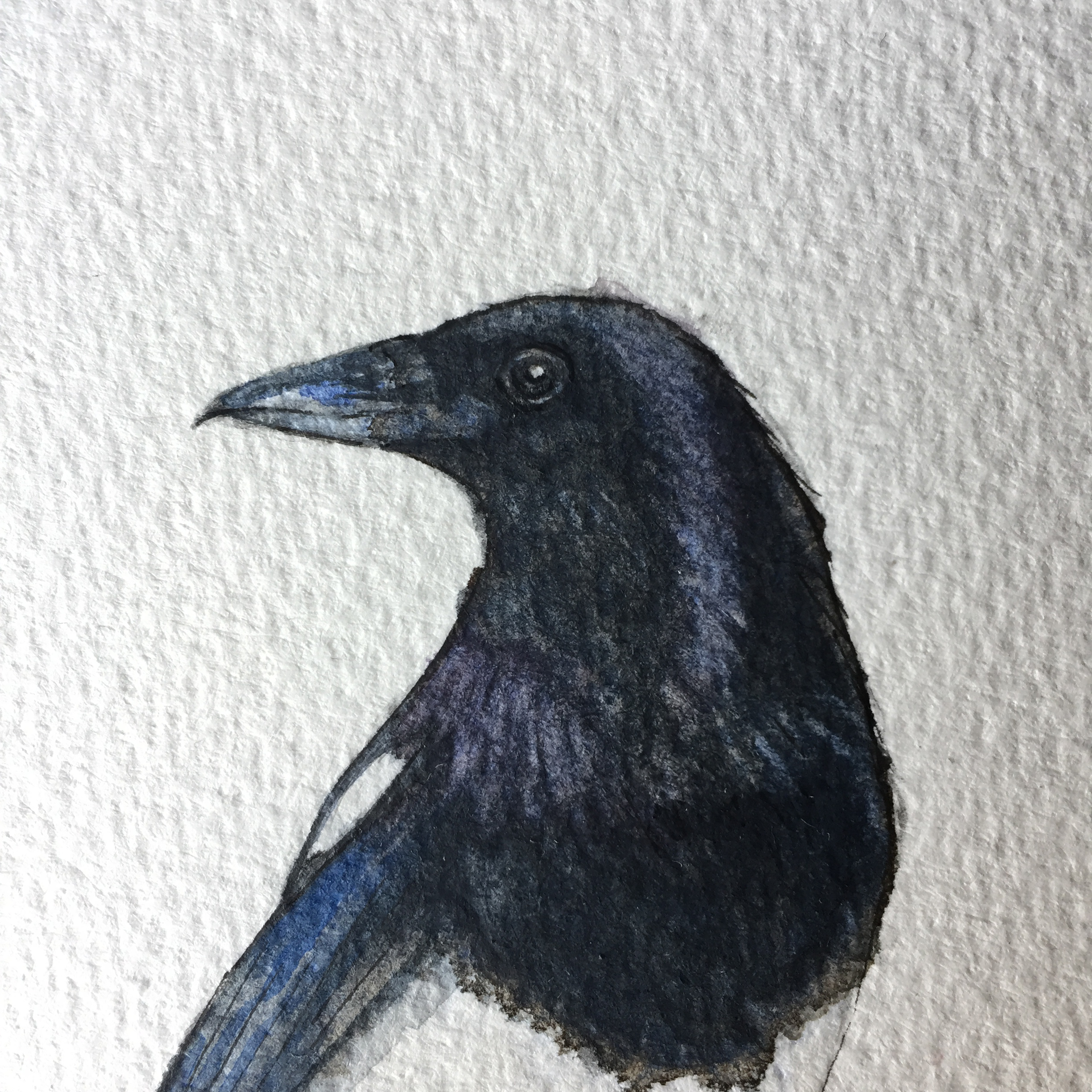
I wanted to start showing the process of making my paintings and drawings via social media to show the thought processes behind the images, but also to encourage me to finish them… This Magpie painting is now finished and below are some of the work in progress (WIP) shots I took along the way.
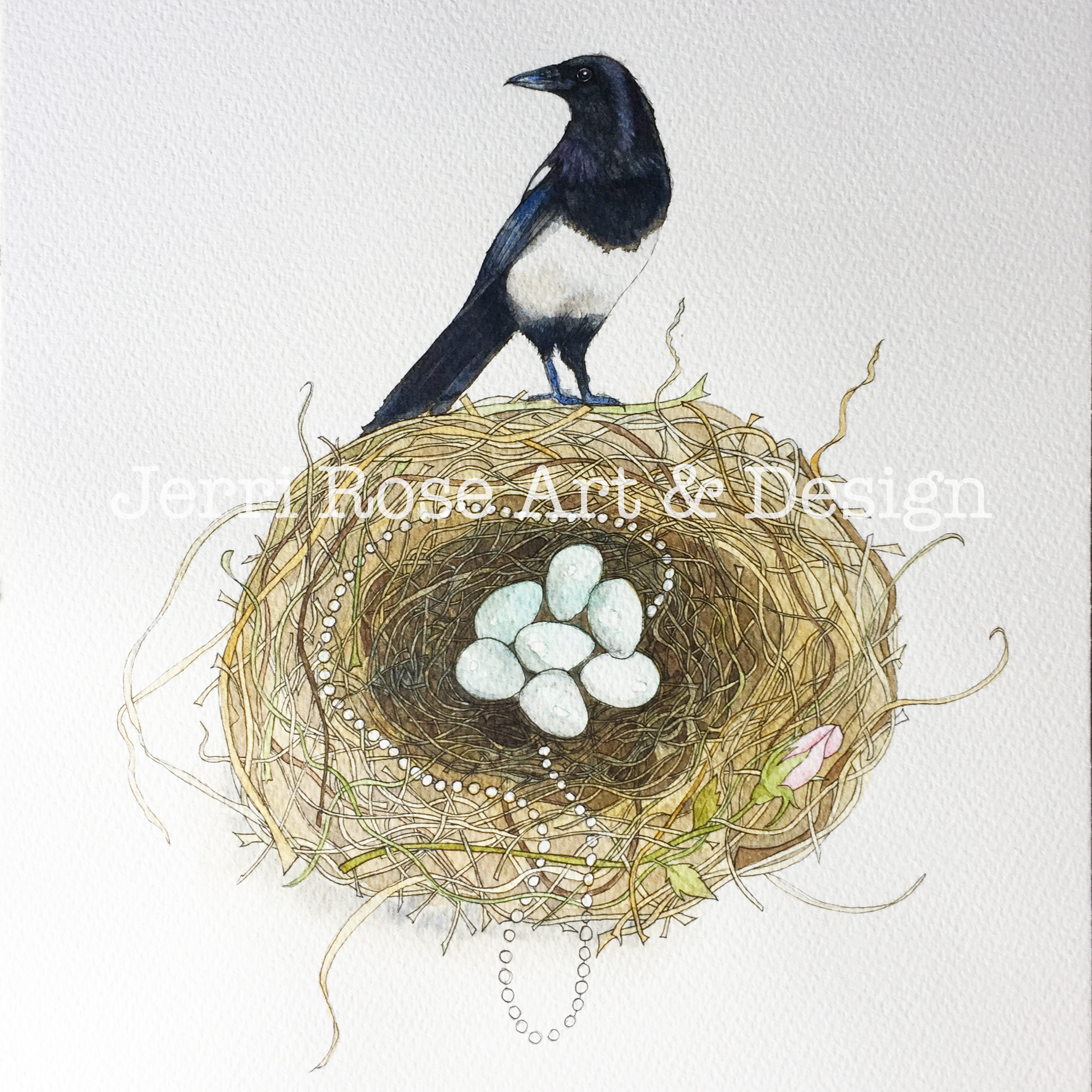
I started off with a quick simple sketch of a magpie just using pencils.
However as I was sketching I noticed all of the subtle colour details within the magpies feathers. Although initially they look black and white, magpies have purple and blue undertones to their feathers. It was at this stage that I decided to start a watercolour picture and as a lover of detail I started to want to draw the magpies nest as well. The first stage was to transfer the sketch onto watercolour paper.
As mentioned above, I am a sucker for detail, and loved the idea of weaving other elements into the magpies nest. Magpies are known lovers of pretty things, and I love all things vintage, so I included a pearl necklace woven into the nest. Then as my surname is Rose I incorporated a rosebud into the nesting material. Here is the basic sketch of the picture.
I decided to start painting the nest first, purely as I was quite confident about painting the magpie, and I didn’t want to end up ruining my picture. I did a wet on wet wash using a Burnt Sienna and a Burnt Sienna/French Ultramarine black mix for the shadows. Unfortunately the blue granulated, which is a known effect for Ultramarine blue, so lesson well and truly learnt! I then added different colours to highlight some of the nesting material and painted the rose.
I was fairly pleased with the look of the painting so far even though the shadows in the nest didn’t quite work as I had planned, but I decided to work with this and carry on to the next stage: painting the magpie. I loved this stage so much and in my instagram feed (@jerrirose) I stuck up some videos of the process. I did wet on wet again but used a different blue for the black mix. Waiting for each layer to dry was easier than I thought and the magpie came together fairly quickly.
Now it was decision time. Should I ink the painting or not? My husband said no, so I thought I would…obviously. Once started I was quite pleased with the look that the ink gave the painting. It definitely helped to define the nest area better. I used a 0.05 ink pen for this task as I like quite fine lines.
Then finally the painting was finished. Now I just have to decide how to reproduce this painting for prints and get it stuck in my Etsy shop with lots of detailed shots!

